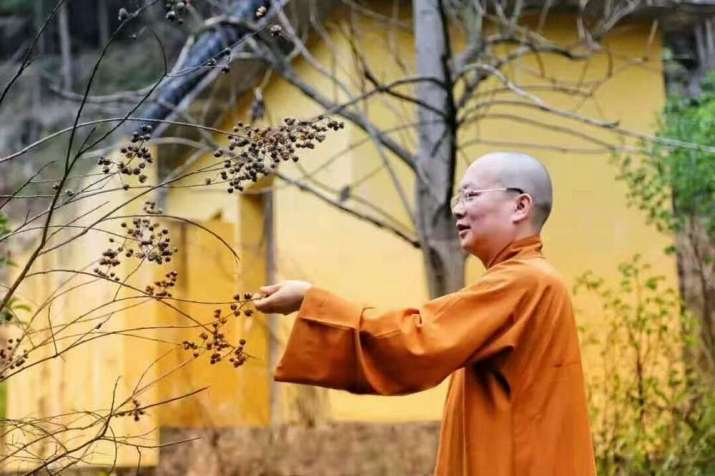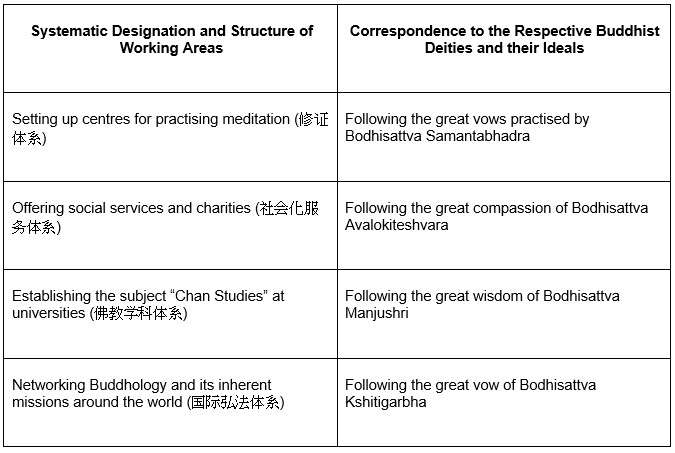FEATURES|THEMES|Commentary
Buddhistdoor View: Beyond Renovations – Modern Buddhist Leadership
 Ven. Dayuan. From china-zen-temple.org
Ven. Dayuan. From china-zen-temple.orgOver the past few months, the Buddhist monastery Wang Fat Ching She in Hong Kong has undergone the final stages of years-long renovations. It has had a long history, built by Layman Wong Kit-wun in 1935, then donated to the Tung Lin Kok Yuen charitable organization in 1960. It was last active as a multi-purpose religious building in the 2010s, and the renovations over the past several years have strengthened this focus. Dharma activities are projected to expand, with more infrastructure, stronger support, and closer supervision. As it has done since 2006, the monastery continues to house the operations of the Buddhistdoor organization and websites, and now also hosts the Centre of Buddhist Studies’ Buddhist counselling unit from The University of Hong Kong. As a whole, the temple’s renovation philosophy prioritizes maintaining past links—for example, it has retained its interior layout, preserving its rooms, chambers, and corridors—while recognizing that contemporary Buddhist communities have 21st century needs that should be embraced.
Renovating a Buddhist monastery cannot be equated to redecorating a house, moving offices, or even constructing a new building. The needs of a religious site are unique. There must be sensitivity when deciding what to do with the shrines that demarcate the sacred spaces and which areas such as bathrooms or offices leased to other organizations should be designated as private or public. These decision-making capacities tend to be a collaboration between a Buddhist organization’s leading staff, who often consist of monastic and lay decision-makers. These Buddhist leaders are bearing increasing responsibility for the holistic future of their religious communities in China and the Hong Kong SAR.
In Haiyan Hu-von Hinüber’s study of Ven. Dayuan’s (b. 1971) rise to power as a religious leader in post-Mao China, the author argues that his experiences and successes render him a paragon of contemporary Chinese Buddhist leadership. This has been a question for Chinese Buddhists since at least Zhao Puchu (1907–2000), the first president of the Buddhist Association of China. In fact, due to the interactions between different schools possessing diverse genealogical and historical developments, as well as the last statement concerning succession and therefore leadership by the Buddha himself in the Mahāparinibbānasuttanta, the methodology of spiritual leadership has gained renewed focus and drive among Buddhist thinkers and institutional Buddhists. Presently, there is a tendency in China for young Buddhist leaders to have a vision of forming “a comprehensive and global Buddhism instead of restricting themselves to the historical school affiliations of their monasteries.” (Hu-von Hinüber 2020, 56)
Haiyan Hu-von Hinüber argues that despite the traditionally local and doctrinally diffuse style of Chinese Buddhist leaders, Ven. Dayuan has become the driver of a broader, global network, specifically in his capacity as founder of the Tianzhu Charitable Foundation. The foundation is itself affiliated to Ven. Dayuan’s Liuzu Monastery (六祖寺), which is based in the Zhenshan Mountains in Sihui City, Guangdong. It was founded during the Tang Dynasty and from 1997 to 2001, Ven. Dayuan was responsible for its renovation and revival. Since then, branches have been established internationally, including in Göttingen and Budapest. Over 25 years, his various projects moved him toward developing four “systems” that are aligned with Buddhist aspirations. (Hinüber 2020, 72) This is known to his associates and devotees as a grand strategy of Buddhist leadership:

Ven. Dayuan's "four systems" (Hu-von Hinüber 2020, 72)
Hu-von Hinüber notes that Ven. Dayuan is particularly good at building sanghas—communities structured around temples or monasteries—along the traditional fourfold model. Ordained bhikkhunis have increased under his watch. He has also nurtured both the monastic and lay dimensions:
Among lay practitioners, Ven. Dayuan has managed to attract even more followers. . . . In the past 25 years of his career, to realise a Saṃgha with all its traditional components, Ven. Dayuan has authenticated the Bodhisattva vow (bodhisattvaśīla, Chin. pusajie 菩萨戒) taken by more than 7,000 lay followers in numerous special ceremonies. . . . Ven. Dayuan brought these lay Buddhists from the lowest level of religious commitment to the highest level that a layperson can reach, namely as Upāsaka (male lay disciple, Chin. youpose 优婆塞) or Upāsikā (female lay disciple, Chin. youpoyi 优婆夷). . . . be it active support for the renovation of old monasteries or the fundraising campaigns for charities and research projects, Ven. Dayuan understands how to engage his lay disciples and encourage them to give their total support to all of his projects as volunteers or as sponsors. (Hinüber 2020, 74–75)
There is nothing too original about this list. If funds were not a universal concern, Buddhist groups would no doubt jump at the chance to set up more centers, embed themselves in the community through charitable work, establish tertiary Buddhist studies bursaries, scholars, centers, or professorships, or build networks of Buddhology. However, the renovation or restoration of historical temples is not mentioned in this list. While renovation might occupy an intermediate or “lesser priority” space within the first category of serving Samantabhadra, the renovation of Liuzu Monastery remains a critical landmark of Ven. Dayuan’s life, vocation, and career as an eminent religious leader in China. It is one of the many activities that demand the full mustering of what Haiyan Hu-von Hinüber calls, “What Makes a Leading Personality in 21st Century Buddhism.”*
Renovation, whether in the case of Liuzu Monastery or Wang Fat Ching She, could only have been assigned to highly competent managers of both spiritual and temporal matters. It is both the stepping stone and the test for different faces of Buddhist leadership: doctrinal familiarity, a long-term plan for how the institutions of the temple and sangha can work toward the calling of Dharma propagation (hongfa, as the name of Wang Fat Ching She denotes), training in accounting and economics, personal traits like sociability, persuasiveness, and diplomacy, and mindfulness and sensitivity to sustaining the “institutional network” of the organization, whether this means maintaining ties to existing sister monasteries or planning to establish new sister monasteries.
With the renovation of Wang Fat Ching She reaching its end, we have a happy opportunity for its community and associates to explore how its broader network could “upgrade” the many facets and activities that its leadership have shaped and crafted to the spiritual benefit of the Hong Kong community over the last few decades. It would seem that discerning the great callings of the four mahasattvas (Avalokiteshvara, Manjushri, Kshitigarbha, and Samantabhadra) is an excellent start, before aligning one’s mission and goals with their callings.
* What Makes a Leading Personality in 21st Century Buddhism
- Broad knowledge of traditional Chinese, Tibetan and Theravada Buddhism and rich spiritual experience in meditative methods
- A long-term vision of a well-equipped Sangha for the future
- A cross-school mindset to create a nationwide network of affiliated monasteries
- The ability to plan and manage skillfully from an economic point of view
- Creation of new concepts that reach people with unique but understandable terminology
- Contemporary interpretations of Buddhist teachings with convincing and inspiring rhetoric
- Personal charisma due to his kindness and open-mindedness
- Willingness to enrich the Sangha by way of collaboration with Buddhist scholars
- Building an extensive global network following the traditional ideal of a united Sangha
- Keeping a certain distance from the power center of politics to focus on basic work
References
Haiyan Hu-von Hinüber. 2020. “An Abbot’s Vision of an Authentic and Global Saṃgha: On the Efforts of Master Dayuan to Revive Buddhism in China.” In When a New Generation Comes up: Buddhist Leadership in Contemporary China. Oxford Centre for Buddhist Studies, pp. 52–100.
See more
Buddhistdoor (Robert H. N. Ho)
Tianzhu Buddhist Network
Related features from Buddhistdoor Global
Buddhistdoor View: A Tale of Two Sanctuaries
Buddhistdoor Global Special Project














